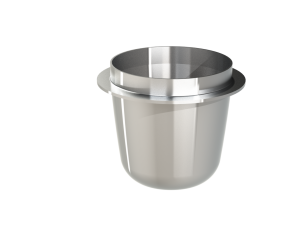Improving the Service Lives of Platinum Crucibles
Platinum crucibles for sample fusion processes are regularly subjected to significant thermodynamic strain and corrosive molten media that can cause gradual mechanical wearing and premature component failure, despite the materials’ inherent low reactivity. This can be problematic for chemical analysts preparing fused discs or beads for x-ray fluorescence (XRF) analysis as degradations in the chemical topography of a platinum crucible’s uppermost surface layers can drastically reduce the accuracy of results. It can also cause labware to develop cracks, which leak molten fluids and cause significant damage to fusion machines.
These conditions rarely arise because of poor development and production or defective platinum labware. Most commonly, platinum crucibles fail due to poor process control in life science procedures. This article will explore conditions that reduce the surface lives of platinum crucibles in more detail, and offer some solutions for improving their physical integrity over time:
What Conditions Cause Platinum Crucibles to Fail?
Platinum’s low reactivity and aversion to oxidation under any temperature makes it the ideal material for manufacturing labware for sensitive sample preparation methodologies. This low reactivity does not necessarily constitute chemical inertness in the presence of all elements in the periodic table, however, and there are select metals that are very responsive to platinum at high temperatures.

Chromium (Cr), nickel (Ni), and zinc (Zn) readily respond to platinum at temperatures exceeding 1200°C (2192°F). Metallic molecules can migrate into the physiochemical structure of a platinum crucible causing damage proportional to the level of contamination, with small cracks at the bottom of the platinum crucible’s profile indicating high degrees of contamination. Low levels of contamination may not cause such significant structural damage, but it can result in chemical leaching during subsequent fusion procedures which can contaminate samples and drastically reduce results accuracy.
Fusing samples with relatively high lead (Pb) or silver (Ag) contents can cause a significant drop in the melting point of a platinum crucible due to undesirable alloying. Even low levels of cross-contamination can cause holes to form in platinum crucibles, rendering the product useless and representing a significant risk to fusion machinery.
How to Avoid These Conditions
Preventing the formation of undesirable alloys and cross-contamination of metals requires strict control of the oxidizing conditions in a fusion process. Oxidant additives can be used in fusion flux mixtures to ensure that compound oxidation occurs before the flux melts or during the fusion process itself. This reduces the risk of leachable molecules chemically attacking the platinum crucible itself, supporting improved mechanical stability over longer periods.
It is also important to regularly inspect your platinum crucibles for cracks or holes that may have occurred due to chemical corrosion. These can be microscopically observed to determine the metallic composition of the metallic grain.
Platinum Crucibles from XRF Scientific
At XRF Scientific, we supply a robust range of platinum crucibles and labware care equipment to ensure that your fusion procedures are carried out at continually high levels of precision. If you would like any more information about our platinum crucibles, please do not hesitate to contact us.









